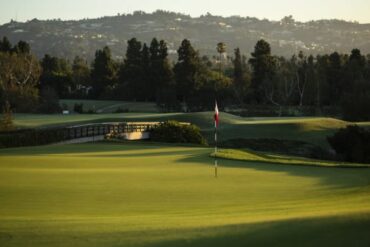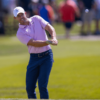The U.S. Open’s first round on Thursday will be an unknown venture.
On the gated grounds of the Los Angeles Country Club’s North Course, a rustic, rolling layout that winds over steep terrain, pros last played there more than 80 years ago. The course provides a look at the second-largest city in the country before it was covered with asphalt.
The location of this week’s U.S. Open places a strong emphasis on the natural in a city based on the made and artificial. That was the goal of the extensive makeover this club undertook more than ten years ago, which prepared one of the top courses in the United States for this big opening.
The attraction of LACC is consisting of a clubhouse made entirely of white that has been standing for more than a century and a course designed to blend in with its surroundings.
George C. Thomas, who designed the course, claimed that he wanted to evoke the “thrill of nature” in his creations, and he succeeded in doing so at the Los Angeles Country Club. There are no water hazards on the land; instead, it is divided into small areas by native grasses and plants. The flowing bunkers are designed to resemble pits formed by erosion.
“In golf course design, utility and art coexist. Both are essential, as Thomas once stated.
Players on the course must maintain a similar balance. Players now have unprecedented information into the best approach to complete the primary goal of this game, getting the ball in the hole as rapidly as possible, thanks to everything from ShotLink to Trackman. However, Los Angeles Country Club responds to the data-driven era.

Here, numbers don’t matter. On many holes, even par is meaningless. The creative aspect of the game will be highlighted as players feel a distinctive and uncharted layout, which is made even more enigmatic by several blind shots where slopes and hills conceal the view of the target.
“I like the design. It provokes thought.” Jon Rahm said.
Players have alternatives there, but there is no course history to guide their choices. Prior to this week, only a small number of athletes in this field have participated here. ShotLink data is not available to reveal how prior players approached the course or even previous outcomes to provide indicators of the winning score.
In a Golf Channel interview, Rory McIlroy stated that the winning score could be anything between 4 under and 4 over.
“I believe there is a wide spectrum. It’s challenging to relate it to one specific golf course, but I believe this one contains elements of many different ones. Since there is no prior history of how people have played it, it will be really intriguing to see how the guys manage it.” McIlroy said.
Los Angeles Country Club, which is not far from the yearly site of the PGA TOUR’s Genesis Invitational, shares an architect with Riviera. However, there are a few commonalities between the locations. At the bottom of a canyon, Riviera is located on a mostly level piece of land. Los Angeles Country Club moves vertically, horizontally, and obliquely. According to McIlroy, this course is more like anything from the Shinnecock Hills on Long Island or the Australian Sandbelt.
“Besides our current location, I don’t notice many other parallels. The grass varieties are not remotely close, and they play quite differently. If you wanted to, you could play the ball along the ground a lot at LACC.” said Max Homa, who won the 2021 Genesis at Riviera and broke the LACC course record in the 2013 Pac-12 Championship.
This is not a typical U.S. Open location. Thick rough and constrictive fairways were formerly thought to be the ultimate test of American golf. Then the analytics deciphered these configurations, revealing that they placed too much emphasis on driving distance.
A sport is frequently reduced to quantitative characteristics like speed and strength where numbers are king. Although golf hasn’t been spared from this, this week offers a less predictable test and a different approach from our dependence on analytics.
This competition has a vintage feel, much like the course itself.
Wide fairways at Los Angeles Country Club give golfers alternatives and space to swing, but the holes’ extreme slopes make it harder than expected to keep a ball in the short grass. A ball doesn’t always land close to where it will eventually settle. Those who stray from the fairways will encounter Bermudagrass rough, which McIlroy referred to as “clumpy.” Players are coming into contact with that grass at a U.S. Open for the first time since 2005.
As players that stray offline won’t be able to forecast what their lie would look like, luck will play a part in this championship.
At the Los Angeles Country Club this year, one should anticipate the unexpected.
On this particular course, golfers are likely to start a par-5 with a fairway wood or less and a par-3 with a driver. For the first time in 76 years, a U.S. Open location contains five par-3 holes with a maximum distance of 200 yards each. While two par-3s, Nos. 7 and 11, are longer than 280 yards, and the 15th 124-yard is predicted to play less than 100 yards at least once.
The 16th par-4 hole is five yards longer than the eighth par-5 hole, which is 537 yards long.
“There are a nice variety of holes in it, some of which you really need to pursue and others of which you can sort of hang on to. It’s a really wonderful test because you can hit many different clubs onto the greens and you have many possibilities,” said World No. 1, Scottie Scheffler.
The fact that Scheffler recalled the majority of the course’s holes over the course of those six years is arguably the highest compliment. He participated in the 2017 Walker Cup here.
“That’s kind of unusual for me,” he acknowledged.
“It has every feature. It has all the makings of a fantastic week.” Rahm said.


